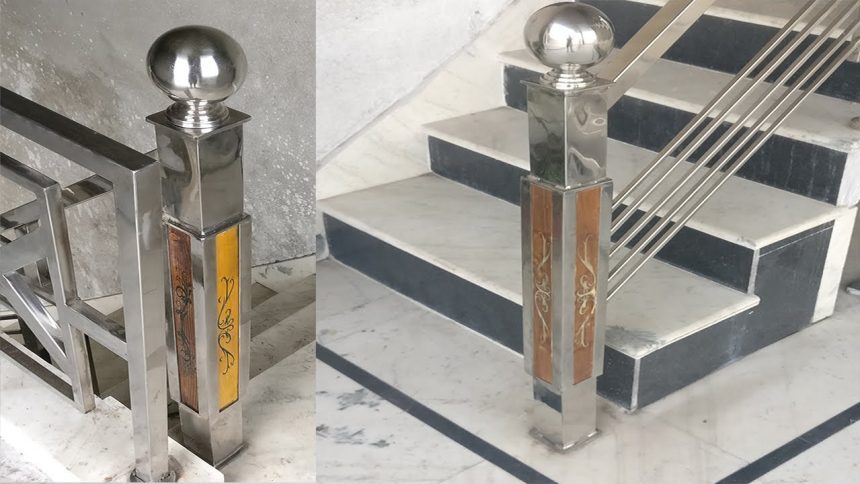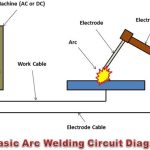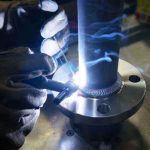Welding finds applications in a wide range of industries, including construction, transportation, agriculture, and professional services. It is an invaluable skill that offers versatility, allowing welders to work in almost any industry.
In this beginner’s guide to welding, we’ll look at:
Welding Town
What welding is
How to get started
The different types of welding
The welding process
Careers in welding
The different types of welding
There are various types of welding processes available, each suited for different applications and skill levels. In this beginner’s guide to welding, we will focus on the four most common and accessible welding processes: MIG (Metal Inert Gas), TIG (Tungsten Inert Gas), Stick, and Flux-Cored welding.
- MIG welding: MIG welding is a versatile and relatively easy process that uses a wire electrode and a shielding gas to create the arc. It is commonly used for welding steel, stainless steel, and aluminum. MIG welding is known for its speed and efficiency, making it popular in both industrial and DIY settings.
- TIG welding: TIG welding is a precise and clean process that uses a non-consumable tungsten electrode and a shielding gas. It offers excellent control and is often used for critical welds on thin materials or when high-quality welds are required. TIG welding is commonly used in applications such as aerospace, automotive, and artistic metalwork.
- Stick welding: Stick welding, also known as Shielded Metal Arc Welding (SMAW), is a versatile process that uses a consumable electrode coated in flux. It is suitable for welding various metals and is often used for construction, maintenance, and repair work. Stick welding is known for its simplicity and ability to perform well in outdoor and adverse conditions.
- Flux-Cored welding: Flux-Cored welding is similar to MIG welding but uses a flux-filled electrode wire instead of a solid wire. It does not require a shielding gas, as the flux creates its own gas shield during the welding process. Flux-Cored welding is often used in construction, fabrication, and heavy-duty applications.
By focusing on these four common welding processes, this guide aims to provide beginners with a solid foundation and understanding of welding techniques that are accessible for home or professional use.
MIG welding
Advantages
- Ideal for those new to welding
- Low cost
- Fast process
- Little cleanup required
- Can be used on a wide variety of metals and base metal thicknesses
- Ideal for most household requirements
Disadvantages
- Not as visually appealing as other welding processes
MIG welding, also known as Gas Metal Arc Welding (GMAW), is a popular choice for beginners and DIY enthusiasts due to its ease of learning and versatility. It requires relatively minimal equipment and is suitable for welding various plate metals with different thicknesses, making it well-suited for household applications.
The MIG welding process involves creating an electric circuit between the metal being welded and a consumable electrode wire. The electrode wire is automatically fed into the weld area. As the wire is brought close to the metal, an arc of electricity is formed, which partially melts the metal and electrode wire. This molten metal creates a bead that fuses the materials together.
To strengthen the weld, a filler material is often used. The filler material, typically similar to the metal being welded, is fed alongside the electrode wire and contributes to the overall strength of the weld joint.
During the MIG welding process, an externally supplied gas source is used to protect the weld from contaminants like oxygen and nitrogen. This shielding gas, often a mixture of inert gases like argon or carbon dioxide, forms a protective barrier around the weld area, preventing atmospheric contamination and ensuring a clean weld.
MIG welding offers an accessible and efficient method for joining metals, making it a popular choice for beginners and DIY projects. Its versatility and ability to produce strong welds make it a valuable skill for various applications, both at home and in professional settings.
TIG welding
Advantages
- Produces superior welds
- Suitable for almost all types of metals
- Filler material optional
- Minimal cleanup required
- Provides greater control over the weld
Disadvantages
- Difficult to automate
- Slow process in comparison to other types of welding
TIG welding, or Gas Tungsten Arc Welding (GTAW), is a precise and advanced form of welding that requires skill and practice to produce high-quality and visually appealing welds. Unlike many other welding processes, the use of filler material in TIG welding is optional, although it can be utilized if necessary.
TIG welding operates by establishing an electric circuit between the metal being welded and a non-consumable tungsten electrode. The tungsten electrode remains intact during the welding process and does not contribute to the weld itself. Instead, it acts as a heat source, generating an arc of electricity that melts the base metal.
To protect the weld from atmospheric contamination, a shielding gas is employed. Common choices for shielding gas in TIG welding are helium and argon. The shielding gas envelops the weld area, preventing oxidation and other contaminants from compromising the quality of the weld.
One distinguishing characteristic of TIG welding is the ability to control the alloying of the electrode with the base metal. This provides the welder with greater control over the weld pool and allows for precise and intricate welds.
TIG welding is a manual process that demands a steady hand and fine motor skills. It is commonly used in applications where weld appearance, precision, and quality are crucial, such as aerospace, automotive, and artistic metalwork.
While TIG welding can be challenging to master, it offers welders the ability to achieve exceptional results when executed skillfully. With its versatility and control, TIG welding remains a preferred choice for welders who seek the utmost precision and control over their welds.












